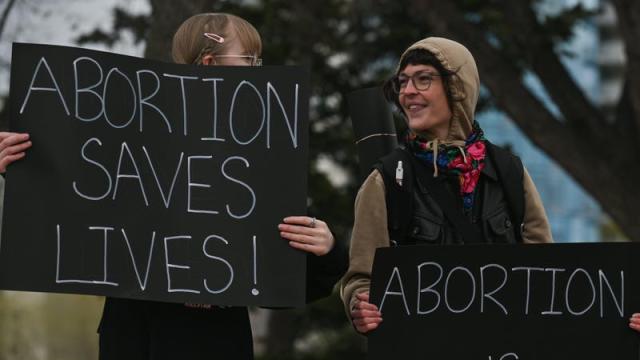Domestic Violence Hotline Reports 99% Increase in Calls Post-Roe
Domestic Violence Hotline Reports 99% Increase in Calls Post-Roe Yahoo News


Sustainable Development Goals and Domestic Violence

Crystal Justice, chief external affairs officer for the National Domestic Violence Hotline, has heard a lot of gutting cases of domestic violence from hotline callers over the years. But since the Supreme Court overturned Roe v. Wade last June, Justice told Jezebel that a few calls, in particular, have stood out to her—namely one woman who said her partner was intercepting her birth control pills after learning she was having them mailed to her. She eventually became pregnant but lived in a state where abortion is banned, and called the hotline desperate to learn her options.
Justice also heard from callers, post-Roe, whose abusive partners have weaponized their states’ abortion laws, as well as the widespread confusion around the laws’ particularities, to confuse and control them. “We’ve seen abusive partners weaponize the possible criminality of accessing abortion, or wrongfully tell a victim that if they do access abortion, they themselves could go to jail, or they’ll report them to the police,” Justice said. (Pregnancy outcomes and self-managed abortion are heavily policed and can lead to criminal charges—but no abortion bans currently in effect criminalize the abortion patient.)
Reproductive Coercion and Domestic Violence


The stories of callers that Justice shared with Jezebel aren’t uncommon: 15% of women experiencing physical violence from a male partner have also reported birth control sabotage. The risk is greater for young people—a quarter of adolescent girls with an abusive male partner have reported their partner attempted to impregnate them by interfering with their contraception.
In 2021, California passed a law to add reproductive coercion to the state’s civil definition of domestic violence. Jane Stoever, a law professor and director of the University of California, Irvine’s Domestic Violence Clinic, told me at the time that she’s counseled numerous domestic violence victims who didn’t recognize acts of reproductive coercion from their partners were a form of abuse: “Reproductive coercion is typically not the only type of abuse experienced in a relationship in which intimate partner violence is present, and it can be challenging to reveal.”
Impact on Survivors and the Need for Support
Even before Roe was overturned, abuse victims and survivors have always been uniquely harmed by anti-abortion laws, their bodies treated as political props for ongoing debates about rape exceptions that are often unhelpful in practice. Justice notes that while abortion rights supporters have expressed particular outrage with how many newly enacted abortion bans lack these exemptions, abortion care should be available to people “regardless of their abusive experience or lack of it.”
Last year, Jezebel reported on the relative silence among national domestic violence and rape advocacy organizations in the face of the fall of Roe. The National Domestic Violence Hotline’s data shows, if anything, their work is more necessary than ever, reflecting the inseparability of reproductive and survivor injustice.
The National Domestic Violence Hotline takes calls 24/7 at 1-800-799-SAFE (7233), or 1-800-799-7233 for TTY. If you cannot speak safely, you can log onto thehotline.org or text LOVEIS to 22522.
More from Jezebel
- Sign up for Jezebel’s Newsletter.
- For the latest news, follow Jezebel on Facebook, Twitter, and Instagram.
Click here to read the full article.
SDGs, Targets, and Indicators Analysis
1. Which SDGs are addressed or connected to the issues highlighted in the article?
- SDG 3: Good Health and Well-being
- SDG 5: Gender Equality
- SDG 10: Reduced Inequalities
- SDG 16: Peace, Justice, and Strong Institutions
The article discusses the impact of abortion bans and anti-abortion laws on survivors of domestic violence, highlighting the connection between reproductive rights and gender-based violence. It also emphasizes the need for access to reproductive health care for survivors to pursue a safer future. These issues are aligned with SDG 3, which focuses on ensuring good health and well-being, including sexual and reproductive health. SDG 5 addresses gender equality and aims to eliminate all forms of violence against women, including intimate partner violence. SDG 10 aims to reduce inequalities, including gender-based inequalities, and SDG 16 focuses on promoting peace, justice, and strong institutions, which includes addressing gender-based violence and ensuring access to justice for survivors.
2. What specific targets under those SDGs can be identified based on the article’s content?
- Target 3.7: By 2030, ensure universal access to sexual and reproductive health-care services, including for family planning, information and education, and the integration of reproductive health into national strategies and programs.
- Target 5.2: Eliminate all forms of violence against all women and girls in the public and private spheres, including trafficking and sexual and other types of exploitation.
- Target 10.2: By 2030, empower and promote the social, economic, and political inclusion of all, irrespective of age, sex, disability, race, ethnicity, origin, religion, or economic or other status.
- Target 16.3: Promote the rule of law at the national and international levels and ensure equal access to justice for all.
Based on the article’s content, the targets identified are directly related to the issues discussed. Target 3.7 focuses on ensuring universal access to sexual and reproductive health-care services, including family planning, which is crucial for survivors of domestic violence. Target 5.2 aims to eliminate all forms of violence against women and girls, including intimate partner violence and reproductive coercion. Target 10.2 emphasizes the need to empower and promote the inclusion of all individuals, regardless of their gender or survivor status. Target 16.3 highlights the importance of promoting the rule of law and ensuring equal access to justice for survivors of domestic violence.
3. Are there any indicators mentioned or implied in the article that can be used to measure progress towards the identified targets?
- Indicator 3.7.1: Proportion of women of reproductive age (aged 15-49 years) who have their need for family planning satisfied with modern methods.
- Indicator 5.2.1: Proportion of ever-partnered women and girls aged 15 years and older subjected to physical, sexual, or psychological violence by a current or former intimate partner in the previous 12 months.
- Indicator 10.2.1: Proportion of people living below 50 percent of median income, by age, sex, and persons with disabilities.
- Indicator 16.3.2: Unsentenced detainees as a proportion of overall prison population.
The article does not explicitly mention indicators, but based on the identified targets, the following indicators can be used to measure progress:
– Indicator 3.7.1 measures the proportion of women of reproductive age who have their need for family planning satisfied, indicating access to reproductive health-care services.
– Indicator 5.2.1 measures the prevalence of violence against women by a current or former intimate partner, providing insights into the extent of gender-based violence.
– Indicator 10.2.1 measures the proportion of people living below a certain income threshold, which can reflect economic inequalities and exclusion.
– Indicator 16.3.2 measures the proportion of unsentenced detainees in the overall prison population, indicating access to justice and fair legal processes.
4. SDGs, Targets, and Indicators Table
| SDGs | Targets | Indicators |
|---|---|---|
| SDG 3: Good Health and Well-being | Target 3.7: By 2030, ensure universal access to sexual and reproductive health-care services, including for family planning, information and education, and the integration of reproductive health into national strategies and programs. | Indicator 3.7.1: Proportion of women of reproductive age (aged 15-49 years) who have their need for family planning satisfied with modern methods. |
| SDG 5: Gender Equality | Target 5.2: Eliminate all forms of violence against all women and girls in the public and private spheres, including trafficking and sexual and other types of exploitation. | Indicator 5.2.1: Proportion of ever-partnered women and girls aged 15 years and older subjected to physical, sexual, or psychological violence by a current or former intimate partner in the previous 12 months. |
| SDG 10: Reduced Inequalities | Target 10.2: By 2030, empower and promote the social, economic, and political inclusion of all, irrespective of age, sex, disability, race, ethnicity, origin, religion, or economic or other status. | Indicator 10.2.1: Proportion of people living below 50 percent of median income, by age, sex, and persons with disabilities. |
| SDG 16: Peace, Justice, and Strong Institutions | Target 16.3: Promote the rule of law at the national and international levels and ensure equal access to justice for all. | Indicator 16.3.2: Unsentenced detainees as a proportion of overall prison population. |
Behold! This splendid article springs forth from the wellspring of knowledge, shaped by a wondrous proprietary AI technology that delved into a vast ocean of data, illuminating the path towards the Sustainable Development Goals. Remember that all rights are reserved by SDG Investors LLC, empowering us to champion progress together.
Source: news.yahoo.com

Join us, as fellow seekers of change, on a transformative journey at https://sdgtalks.ai/welcome, where you can become a member and actively contribute to shaping a brighter future.







